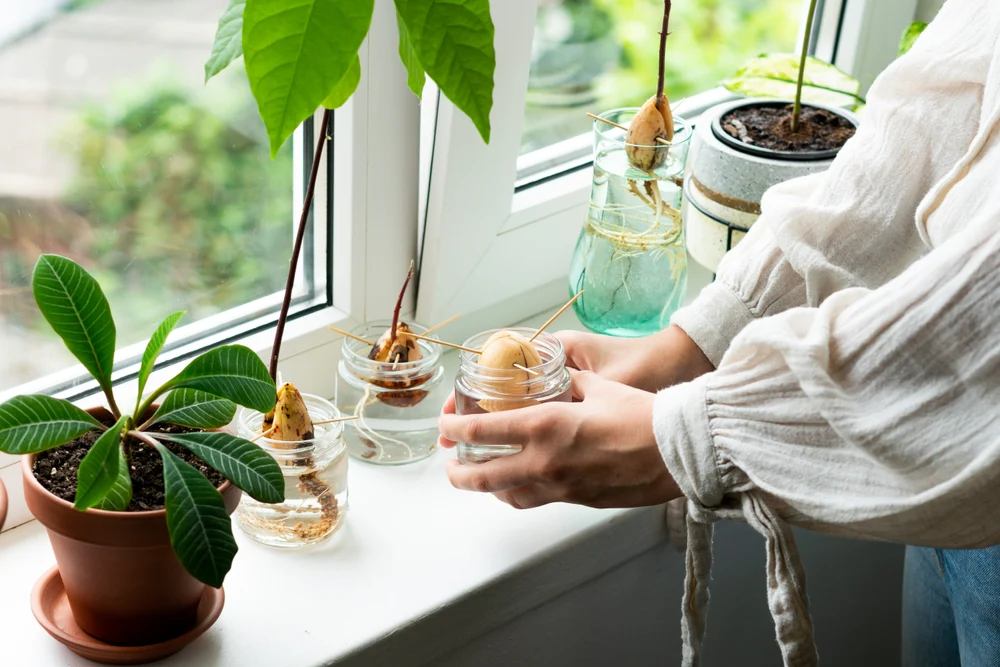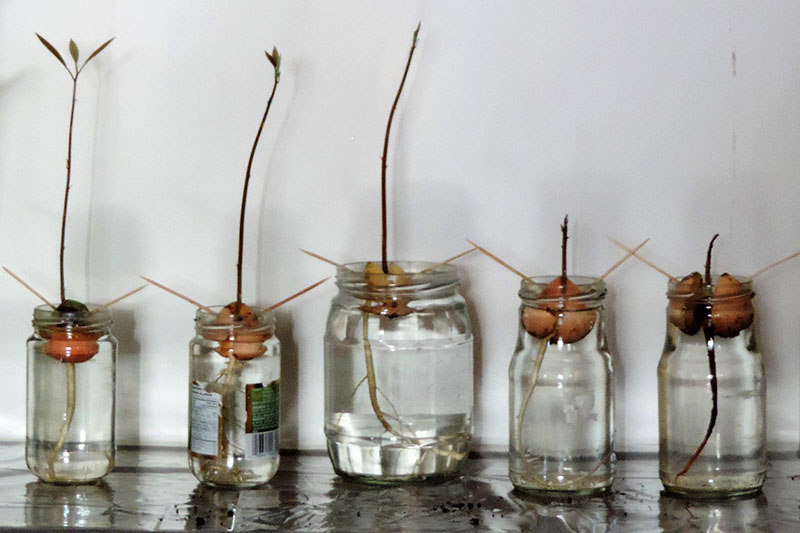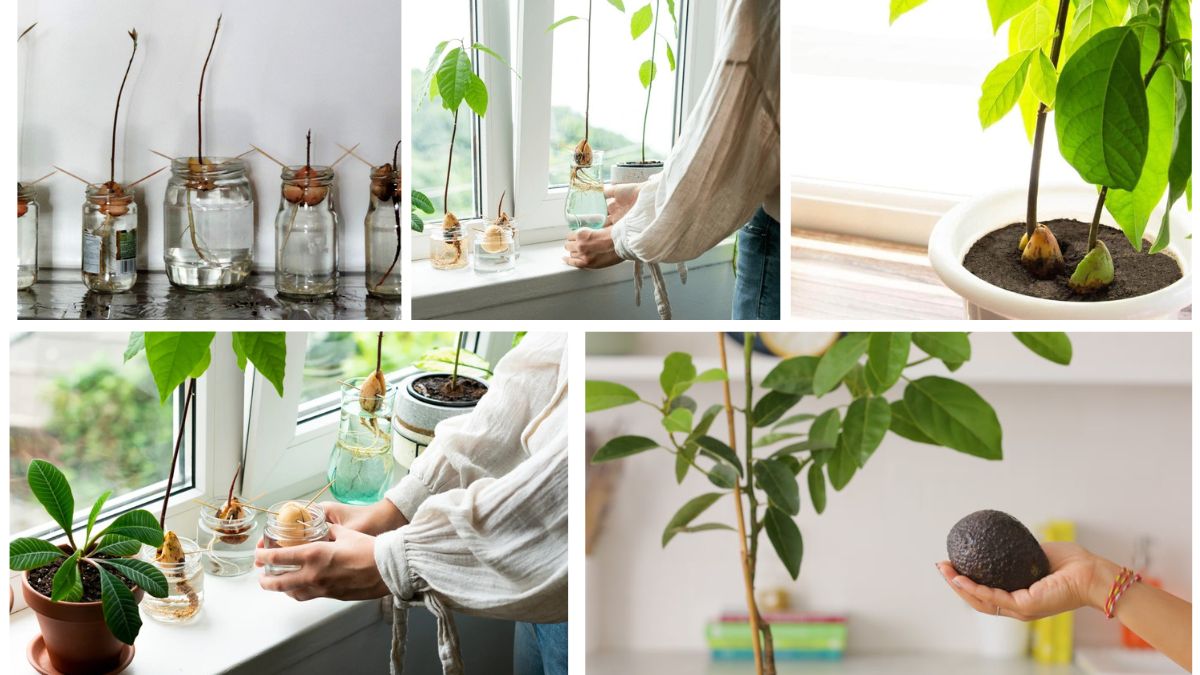Avocado (Persea americana) is a tropical fruit prized for its creamy texture, rich flavor, and numerous health benefits. While purchasing an avocado tree from a nursery is an option, growing one from seed is a rewarding and cost-effective project for beginners and gardening enthusiasts. Watching a small seed develop into a healthy plant offers insight into plant growth, root development, and indoor gardening. This guide provides a comprehensive step-by-step approach to growing avocado plants from seeds.
Introduction to Avocado Plants

Avocado trees are native to Central and South America and have become popular worldwide for their nutritious fruits, which are high in healthy fats, fiber, and vitamins. Growing an avocado from seed may not yield fruit immediately—it can take several years—but the process is educational, enjoyable, and adds greenery to your home.
Avocado plants are versatile and can thrive indoors as potted plants or outdoors in warm climates. They prefer bright, indirect sunlight, well-draining soil, and consistent care, making them suitable for both beginners and experienced gardeners.
Step 1: Selecting and Preparing the Avocado Seed
The success of avocado propagation begins with selecting a healthy seed:
- Choose a ripe avocado – Select fruit that is fully ripe, soft to the touch, and free from disease or bruises.
- Extract the seed – Carefully remove the seed without cutting or damaging it.
- Clean the seed – Rinse thoroughly under lukewarm water to remove all fruit residue. Avoid using soap or chemicals, which may harm the seed.
- Inspect the seed – Healthy seeds are firm and unblemished. Seeds that are cracked or discolored may not germinate.
Tip: Plant seeds soon after extraction for the best germination rate.
Step 2: Methods of Avocado Seed Germination

There are two common methods for germinating avocado seeds:
1. Toothpick and Water Method
- Insert three to four toothpicks into the seed, evenly spaced around the middle.
- Suspend the seed over a glass of water, with the pointed end facing upward and the flat end submerged in water.
- Change the water every 2–3 days to prevent bacterial growth.
- Place the glass in a warm, bright location with indirect sunlight.
- Roots and shoots typically appear in 3–6 weeks.
2. Direct Soil Planting Method
- Fill a small pot with well-draining potting soil.
- Plant the seed halfway into the soil, leaving the top half exposed.
- Water lightly and place the pot in a warm, sunny location.
- Keep soil consistently moist but not waterlogged. Germination may take longer than the water method, but roots establish directly in soil.
Step 3: Caring for the Germinating Seed

During the germination phase, proper care ensures a healthy seedling:
- Temperature: Keep the seed at 65–75°F (18–24°C).
- Light: Indirect sunlight is ideal; avoid direct midday sun, which can overheat and dry out the seed.
- Watering: Maintain consistent moisture without overwatering. Excess water can cause rot.
- Patience: Some seeds may take longer to sprout; do not disturb the seed while waiting for root and shoot growth.
Step 4: Transplanting the Seedling
Once the seed has developed a strong root system and the shoot reaches 6–8 inches:
- Prepare a pot with well-draining soil, such as a mix of garden soil, peat moss, and perlite.
- Carefully remove the seed from water (if using the toothpick method).
- Plant the seed in soil, ensuring that the top half remains above the soil line.
- Water thoroughly and place the pot in bright, indirect sunlight.
Tip: Avoid planting the seed too deep, as this can inhibit growth and cause rot.
Step 5: Ongoing Care for Young Avocado Plants

Proper care during the seedling stage promotes strong growth and a healthy plant:
Light Requirements
- Avocado plants thrive in bright, indirect sunlight.
- If growing indoors, place near a south-facing window or provide supplemental grow lights.
Watering
- Water when the top 1–2 inches of soil feel dry.
- Avoid overwatering, which can cause root rot.
- Increase watering frequency during warmer months and reduce in winter.
Fertilization
- Use a balanced liquid fertilizer every 4–6 weeks during the growing season.
- Avoid over-fertilization, which can damage roots and stunt growth.
Temperature and Humidity
- Maintain indoor temperatures between 65–85°F (18–29°C).
- Protect plants from cold drafts or sudden temperature fluctuations.
- Avocado plants prefer moderate humidity; misting leaves can help in dry indoor conditions.
Step 6: Pruning and Shaping

Pruning encourages bushier growth and strengthens the plant structure:
- Pinch off the top 1–2 inches when the seedling reaches 12 inches to encourage branching.
- Remove any dead or yellowing leaves regularly.
- Avoid heavy pruning during the first year, as the young plant is establishing roots.
Tip: Shaping your avocado plant early promotes a fuller, aesthetically pleasing indoor plant.
Step 7: Dealing with Common Issues
- Yellow Leaves: Often caused by overwatering or nutrient deficiencies. Adjust watering and provide balanced fertilizer.
- Slow Growth: Insufficient light or low temperatures can reduce growth. Move plant to a brighter location and maintain optimal temperature.
- Leaf Drop: Can occur due to sudden environmental changes or drafts. Ensure stable indoor conditions.
- Pests: Spider mites or aphids may appear. Treat with insecticidal soap or neem oil as needed.
Step 8: Long-Term Care and Maturation
- Avocado plants grown from seed may take 5–13 years to produce fruit.
- Indoor plants often remain ornamental, but careful care can eventually lead to flowering and fruiting if environmental conditions are ideal.
- Repot every 1–2 years to provide fresh soil and sufficient root space.
- Continue pruning to maintain size and encourage strong growth.
Tip: Avocado plants benefit from occasional deep watering to encourage root development.
Benefits of Growing Avocado Plants from Seeds
- Cost-Effective: Create a new plant from a single fruit seed.
- Educational: Learn about seed germination, root growth, and plant care.
- Aesthetic Value: Adds lush greenery to indoor spaces.
- Sustainable Gardening: Reduces reliance on purchased seedlings and promotes self-sufficiency.
- Health Benefits: Eventually, you may enjoy homegrown avocados, rich in healthy fats, vitamins, and minerals.
Growing avocado plants also fosters patience and observation, valuable skills for beginner gardeners and horticulture enthusiasts.
Conclusion
Growing avocado plants from seeds is a rewarding and educational journey for beginners. By carefully selecting a healthy seed, choosing the appropriate germination method, providing proper care, and practicing patience, you can successfully cultivate a vibrant avocado plant.
From germination to seedling care, transplanting, pruning, and long-term maintenance, each step contributes to a thriving indoor plant that adds greenery, beauty, and educational value to your home. While fruiting may take several years, the process of nurturing an avocado plant from seed provides a deep sense of accomplishment, sustainable gardening practice, and a chance to enjoy one of the world’s most beloved fruits.
Whether for indoor decor, personal satisfaction, or eventual fruit production, growing an avocado plant from seed is a fulfilling project that teaches valuable lessons in plant propagation and care. With consistent attention to light, water, soil, and temperature, your avocado seedling can grow into a strong, healthy plant that brings joy and greenery for years to come.





